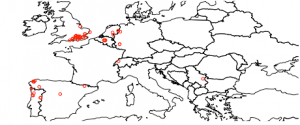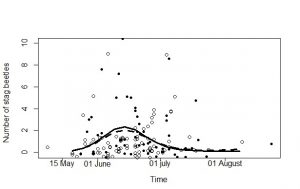
All together 61 transects have been registered in 2018, 27 more transects than in 2017! Most transects lie in the UK followed by Spain, Belgium and Portugal.
From those 61 transects, we received data from 26 transect walks in 2018 compared to 20 transect walks in the year 2017. From these, 15 belong to the UK, 4 from Belgium, Spain and Netherlands have 2 each; and Portugal, Switzerland and Serbia 1 each. This is great news as the number of transect walks is increasing!
Since we started the website in 2016 more than 10 of you have walked your transect every year. We want to thank you and encourage you to keep doing so as this provides us with significant conservation results!
We also want to say a special thanks to those volunteers who have walked their transects at least six times this year as this kind of data is essential for a good evaluation of the local population size and trend! Thank you Joanne and Martin from the UK, Ángel and Jonatan from Spain, Harry and Jan from the Netherlands, Slyvie from Switzerland, and Michele, Erick and Ingrid from Belgium.

In some regions in Europe, the 2018 summer goes into history as extremely warm and dry. As a consequence, some people observed that the stag beetle season was earlier and shorter. We tried to pick up this signal in our transect walk data.
In the plot above, you can see the results for Northwest Europe (Belgium, Germany, the Netherlands and UK) where 2017 observations are represented with black circles, and 2018 observations are represented with white circles.
The number of stag beetles seen is given a bit of additional noise to avoid overlapping dots and rare observations above 10 animals per transect are not shown. Two trend lines are plotted on top, the full line representing the 2017 seasonal pattern and the dashed line representing 2018. These trend lines take differences between transects into account and are adjusted for differences in temperature.
These lines show that the peak of the season was half of June in both years and also the length of the season doesn’t differ. This mainly means that our data is unfortunately not big enough to pick up this pattern and that more transects and transect walks are needed to picture these kind of yearly differences.

